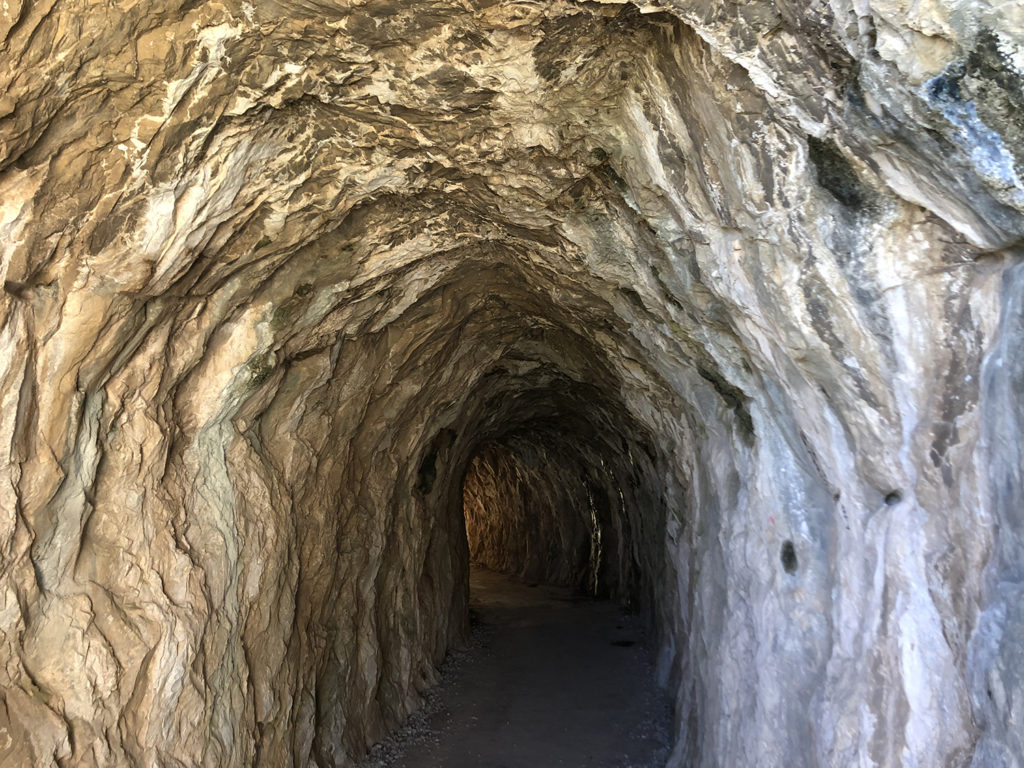
One of our more exciting trips this year was climbing to the top of the Rock of Gibraltar via the Mediterranean Steps. It was by far the best way to experience Gibraltar, although I’m not sure we would have been so carefree if we’d known exactly what we were getting into beforehand.
It was only after we had reached the top and were on our way back down that I happened to check the brochure we’d been given and learned that the path we’d taken was the Thrill Seeker route, “perfect for the adrenaline junkie and fitness enthusiast.” Seriously? Adrenaline junkie? Me? Ron?? Definitely glad we didn’t read the brochure before setting out, as “adrenaline junkie” is not the first thing that comes to mind when thinking about myself or Ron.
First, a bit of background. The Rock of Gibraltar is a massive limestone promontory located on the southern tip of the Iberian Peninsula, west of Malaga and about an hour and half drive from where we’re staying in La Cala del Moral. It’s 426 m high (1,398 ft), although the highest accessible point is 421 m (1,381 ft). That’s the part we climbed. According to Wikipedia, 40 per cent of the Upper Rock is protected by a nature reserve.
Gibraltar is also a British Overseas Territory and strategic military base guarding the Strait of Gibraltar, the only entrance to the Mediterranean Sea from the Atlantic Ocean, and the narrowest point between Europe and Africa, which is only 14 km away (nine miles).
There are basically three different ways to reach the top of Gibraltar.
- Cable car. This is the easiest and, at six minutes per trip, the fastest.
- Taxi tour. Also easy and good for groups, as the tour operators try to pack as many people into their vans as possible. Not great if you’re only two.
- Walking. There are four main walking routes to the Upper Rock Nature Reserve, including the Mediterranean Steps.
We parked on the Spanish side, in the neighbouring town of La Línea de Concepción, and walked across the border into Gibraltar, and then across the airport runway into town. We then caught one of the local buses (the Number 2, if you’re planning a trip), which dropped us off at the corner of Europa Road and Windmill Hill Road, partway up the mountain.

We then walked another 25 minutes up – yes, up – Windmill Hill Road before finally reaching the start of the Mediterranean Steps. Not very well-marked, either. At one point, worried we’d taken a wrong turn somewhere, we asked a road crew for directions. All they did was gesture to keep going up.

The start of the trail – called Martin’s Path – is fairly gentle as it winds around the southern end of the Rock, although the path itself is narrow and rocky, more like a dry creek bed.

At this point, we were thinking “no sweat.” Although we did begin to wonder when and where the famous “steps” were. After climbing steadily for about 20 minutes, Ron began to ask “Are we there yet?” That’s about when the path veered and plunged downward, almost back to sea level before heading up the rock face. Very discouraging, but for those who know us, we would not be daunted. Perseverance is our middle name.

We finally reached the start of the Mediterranean Steps, cut into the rock face, and began our ascent. My mountain-climbing brother, Brian, would have been proud.



The views from the Mediterranean Steps are breathtaking, and well worth it. Not for the faint of heart, nor those who have a fear of heights. No special equipment necessary, but those rope handrails sure came in handy, as did Ron’s cane. We were taking a break, admiring the view, as a young woman clambered past us on her hands and knees (purple nail polish intact), totally out of breath. She looked up at Ron and said she needed a stick. Ron looked at her and said well, you’re not getting mine. Later, we overheard her boyfriend telling her that if an “old man with a cane” could make it up the Rock, she could too.




It was a once in a lifetime experience, and definitely worth it.